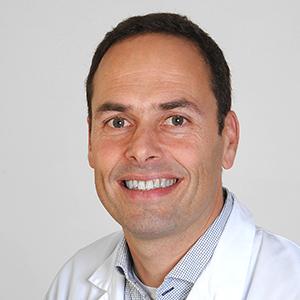Charting the surfaceome to eliminate hairy cell leukemia (HCL)

Thorsten Zenz
MDUniversitätsspital Zürich - Klinik für Medizinische Onkologie und Hämatologie USZ
Project Term: October 1, 2021 - September 30, 2023
To optimize treatment of HCL, we dissect the tumors` surface proteome to understand a) surface mediated signals and b) the dependence on BRAFV600E activity, to c) eradicate remaining cell populations after BRAF inhibitor treatment. We use chemoproteomics, which enable mass-spectrometric-based surfaceome discovery to quantitatively investigate HCL. We expect to identify HCL specific and BRAF-dependent surfaceomes and identify new and critical targets for treatment.
Under current targeted treatments with BRAF blockers, some cells HCL cells resist. In our observations from studies on HCL therapy with these drugs, we found that these cells remain and contribute to relapse. To improve the outcome of HCL, we develop precision medicine using a new strategy. We study HCL cells at the cell surface level repeatedly over time and under selective pressure of treatment to specifically understand changes on cell surface of these remaining cells once a steady state is reached and to define ideal windows for therapy. This cannot be measured with alternative methods such as gene expression. Cell surface analysis over time will provide data for the selection of ideal avenues and time points to intervene. We compare the dynamic cellular behavior "through the lens of drug response". We will use primary HCL cells from patients to create a map of cell surface markers. Using an advanced and miniaturized new technology for cell surface protein quantification, we characterize HCL cell surface markers. These experiments will provide insight into the molecular backbone of HCL at the site where interaction with the environment occurs. Our technologies enable the cellular characterization without predefined antibodies. The cell surface protein map of HCL cells comprises likely more than 1000 different cell surface molecules, many of which have escaped prior studies. We will then investigate the dynamic response of HCL cells to inhibitor treatment on cell surface markers. We previously found a number of key markers specific to HCL to be lower in abundance upon inhibitor treatment. One hypothesis we will address is if HCL cells when treated with drugs, become more dependent on specific signaling pathways. In addition, we will investigate if novel proteins emerge on the cell surface under treatment. These proteins would constitute critical targets for new therapeutic approaches. Once the detailed study of larger cell populations has yielded candidates, we use independent technologies to examine a large panel of proteins on single cell level both from samples exposed to inhibitors in the laboratory and in patients. A key aim emerging from this research within a patient-research-patient cycle is to identify targets for novel-therapies in the context of current inhibitor treatments, which we can use to eradicate residual cells, which form the basis for relapse requiring additional treatment.
The Hairy Cell Leukemia Foundation (HCLF) and The Leukemia & Lymphoma Society (LLS) have joined forces to create the HCL2025 program to support targeted research to build a more comprehensive foundational understanding of the molecular basis of hairy cell leukemia (HCL), develop additional therapies, and optimize outcomes for patients with this disease.